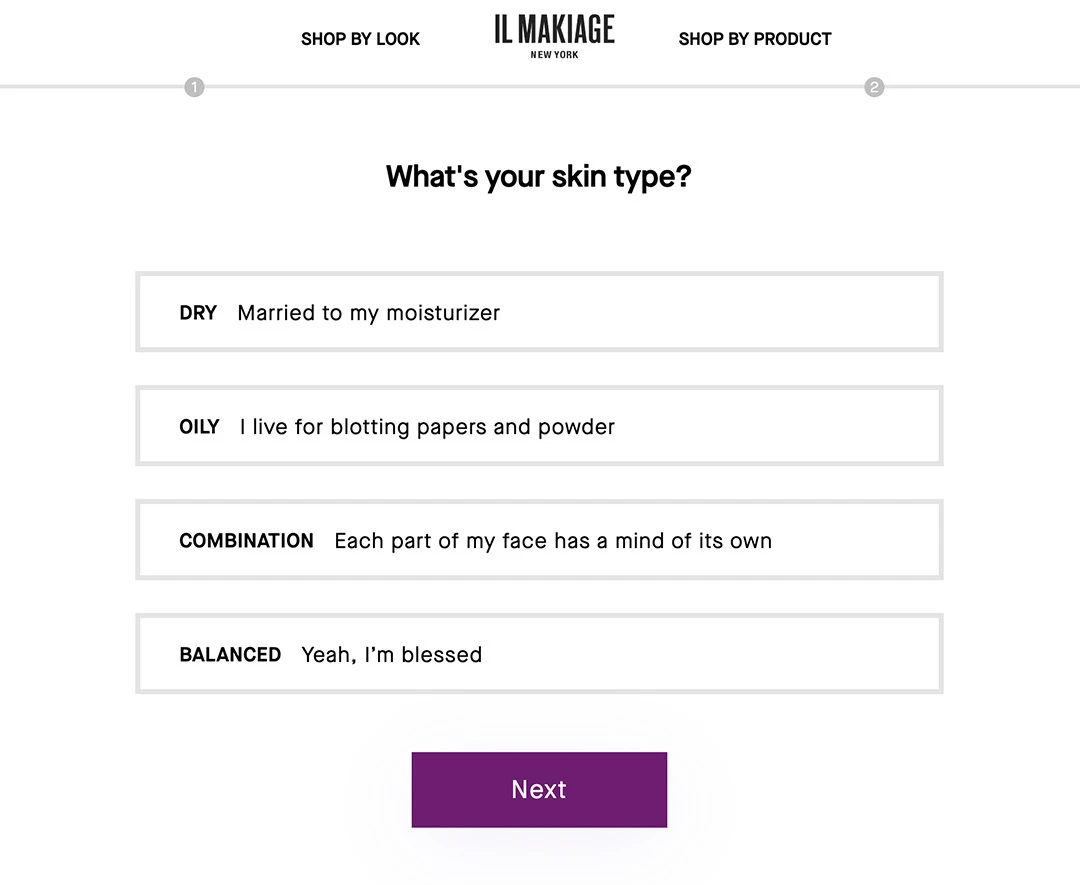In a highly saturated market, customer loyalty is not a given. Customers are often incentivised to jump ship or, at the very least, avoid going all in on a brand if competitors distract them. Hyper-personalised marketing prevents this.
Nearly three quarters of surveyed consumers (73%) said they want more personalised experiences from brands in the future, according to our 2024 State of Video Technology Report. Why? Because it makes individuals feel valued and provides them with relevant information without requiring them to dig around for it. These customer needs are not to be taken lightly.
In what Deloitte calls the “mass to micro” future, hyper-personalisation allows companies to grab hold of their customers’ attention, which becomes more and more difficult to capture as time goes on. It also enables consumers to glean more value from the companies they choose to do business with, meaning all parties benefit in the long run.
The hyper-personalised customer experience works via strategic audience segmentation, feeding off customer data and touchpoints stemming from social media to ecommerce purchase history and beyond. Companies provide video and other personalised content that’s not only deeply relevant to the individual, but unique to them as well (and that’s unique in the literal sense, as in one of a kind).
What Does “Hyper” Mean in Hyper-Personalised Marketing?
In and of itself, traditional personalisation is already a step above audience segmentation that’s based on simple demographics. Whereas standard segmentation can be useful early on in a marketing campaign strategy, true personalisation occurs when you get to know your customers based on their unique data.
Hyper-personalisation takes things a step further by delivering content that is utterly specific to the individual. When applying this to personalised email marketing, for example, what Janelle sees in her inbox is different from what Tyler sees in his. The content will include their own name and information that is relevant to them and only them. It’s truly one in a million.
Post on
We already know that personalisation is an effective marketing strategy. In the latest U.S. Consumer Trends Index from Marigold, 84% of consumers say they’re likely to engage with a personalised offer tailored to their interests. But when that personalisation occurs is an important point. Forrester Research found that more tailored messaging works best in the post-purchase phase after companies have already built some level of trust with a customer. Otherwise, it can feel like too much, too soon. In a world where data security is a top conversation, even among consumers, it’s important to tread carefully.
With that said, the “hyper” in hyper-personalisation refers to a unique deliverable that companies provide to their customers at the right time and in the right place. That deliverable can look like an email, in-app experience, video, push notification, social media invite or some other messaging technique. The options span as wide as your imagination, but as with any marketing strategy, it’s imperative to consider where your customers love to spend their time.
Predictive Analytics and Machine Learning: A Must for Hyper-Personalised Digital Marketing?
Predictive analytics and machine learning can indeed power hyper-personalisation, but they’re not a must. Businesses can use first-party data they already have on hand as a way to fuel their personalisation strategy. Think of your CRM or other customer data you might have. Here, data at the individual level is unique, but it doesn’t necessarily require advanced technology to operate.
Predictive data analytics and machine learning are both sub-fields of artificial intelligence, with the former skilled in spotting patterns but still needing human intervention (looking at you, data scientists) while the latter works more autonomously, automatically monitoring and acting on customer behaviors.
But without algorithms supplementing your customer segments and other data points, you can still personalise at the individual level. Brands that know and understand their users can behave in a way that honors authentic customer relationships.
Tip: AI can help with hyper-personalisation in another way — by helping you scale content production. By leveraging AI to create personalised content at scale, you’re able to meet the demands of 1:1 content no matter how large your customer base is.
Examples of Hyper-Personalisation in Action
Hyper-personalisation makes a lot more sense when you see it in action. Here are six examples to show you just how personal it can get.
1. American Airlines Shows Cardholders Value
In an effort to interest an existing American Airlines cardholder in a more premium branded credit card, the airline sent out a video highlighting specific information about the customer in question.
Hyper-personalised elements: American Airlines targeted the customer with their name, type of credit card they currently hold, year they got that card, trip details from the past year, miles and points they could have earned had they had a more premium card and more. There’s even an interactive element at the end, allowing the customer agency in the conversation in real time (and giving the brand real-time data from the interaction).
2. Spotify Daylists Speak to the Soul
What could possibly be more personalised than a Discover Weekly playlist tailored to your listening habits? Spotify took that as a challenge, niching down even further to specific daylists, even breaking them down into morning, afternoon and evening based on what listeners tend to vibe with at those times of the week.
Hyper-personalised elements: Spotify gives each daylist a hyper-specific title and unique graphic for sharing purposes. While it’s clear these playlists are driven by the platform’s knowledgeable algorithm, it’s also a way to increase existing customer engagement and promote shares of Spotify-made content beyond the platform.
Since we’re talking about Spotify and personalisation, I’ve got to mention our tips about what you can learn from Spotify Wrapped. You might be surprised!
3. American Express Onboards Customers Personally
Rather than sending a boilerplate email or document to new customers, American Express focused on user experience and decided to onboard with the individual in mind.
Hyper-personalised elements: They used the customer’s name, the type of credit card they got, number of years as a customer so far and a synopsis of rewards based on the customer’s unique selection. The customer was presented with relevant information and didn’t have to do any digging.
4. Kensington Tours Thanks Travelers 1:1
In addition to planning tailored trips of a lifetime, Kensington Tours also tailors marketing — down to the details.
Hyper-personalised elements: This Personalised Video features the customer’s name, number of days of their last trip, the location of their upcoming trip and the name of their next destination expert, all of which plays on the traveler’s excitement and shows loyalty appreciation in a simple way.
5. BencoDental Sums Up the Year To Boost Sales
With catchy background tunes and data-filled visuals, BencoDental gave customers something that’s undeniably relevant: their own stats as a customer from the previous year.
Hyper-personalised elements: Membership level, total purchases in dollar value, top product categories, percent of products recently invented and more. The last point here is a great upselling tactic, showing how much they’re innovating and — more importantly — how much more they could innovate. There are even specific product recommendations on screen.
6. Il Makiage Gets Personal With Shade Matching
Il Makiage is known for its PowerMatch quiz that gets as granular as a microscope on a pore. Not only is it a streamlined way to welcome new customers to the mix, but it’s also a data-gathering tool for future product recommendations, keeping existing customers satisfied.
Hyper-personalised elements: Once you finish the quiz, Il Makiage will email you your results as well as foundation recommendations that fit your skin type and shade. Now that’s a personalised email you’ll want to open.
Taking Individual CX to the Next Level
Consumers know what they want — 47% of them love to see personalised experiences after they’ve bought a product or service, compared to just 38% in the initial discovery phase.
At the same time, 48% of consumers have felt frustrated as a result of irrelevant content or
offers, proving just how much of a fine line hyper-personalisation walks on. Over time, customer expectations have evolved in a way that leaves them desiring recognition and respect in one fell swoop. This can feel difficult to balance, but hyper-personalisation with a trusted partner can help you check all the boxes.
At Idomoo, hyper-personalisation is the name of the game. Video hyper-personalised with relevant customer data have proven themselves valuable time and again for both companies and their customers.
Creating and delivering hyper-personalised content doesn’t have to be a chore. Our Next Generation Video Platform makes the process breezier than a bay window in the spring.





